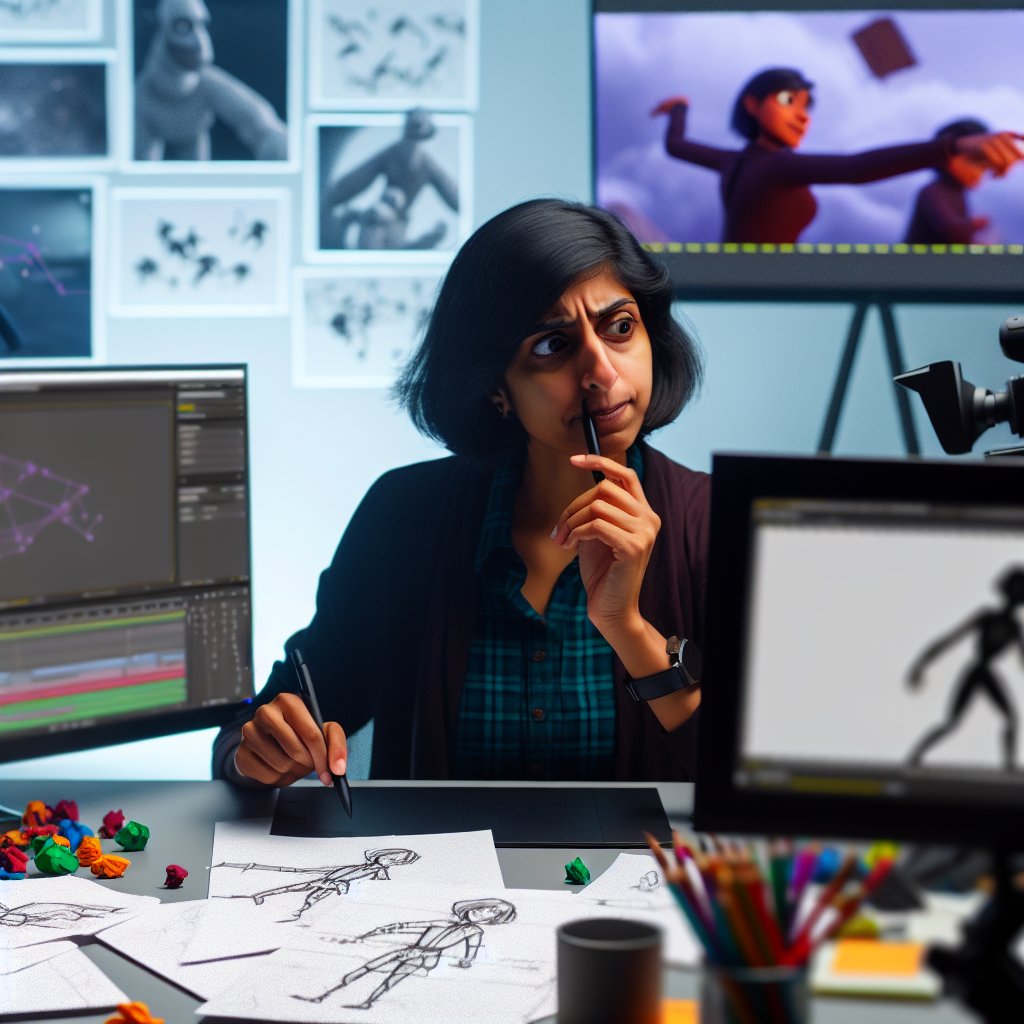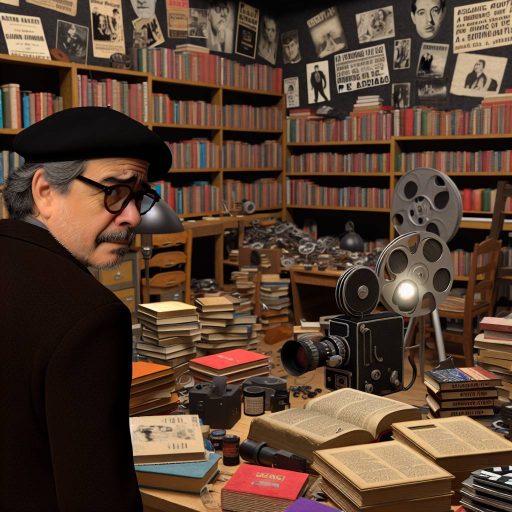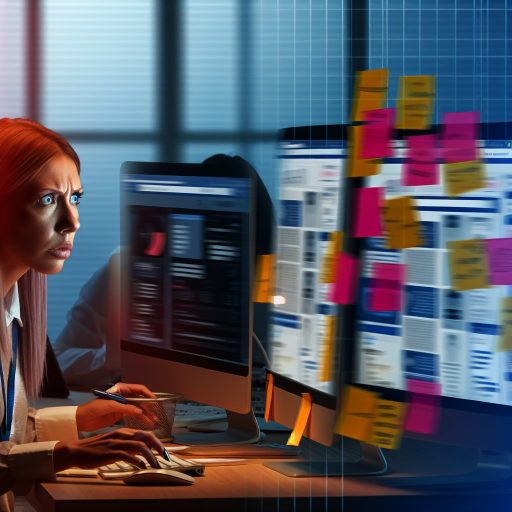Introduction
The animation industry plays a vital role in modern media.
It encompasses films, video games, television shows, and online content.
Audiences worldwide enjoy animated works for their unique storytelling techniques and visual appeal.
Animation allows for creativity beyond the limitations of live-action filming.
Understanding the animation production pipeline is essential for aspiring animators and interested audiences.
By knowing each stage, animators can navigate their projects efficiently.
Audiences gain appreciation for the labor and artistry involved in creating animated content.
This blog post aims to break down each stage of the animation production pipeline.
Each phase is crucial for transforming ideas into finished animated products.
We will explore the significance of each step and highlight the collaboration between different team members.
Concept Development in Animation
In the world of animation, the initial stages determine the project’s overall direction and vision.
This section focuses on the concept development phase, where ideas take shape and foundations are established.
Initial Idea Generation
Every successful animation begins with an idea.
The idea serves as the heart of the project. Generating initial ideas often involves brainstorming sessions.
These sessions bring together creators, writers, and artists.
Collaboration fuels creativity and fosters innovation.
A typical brainstorming session includes:
-
Gathering a diverse team of creative individuals.
-
Encouraging open and free-flowing discussions.
-
Using visual aids such as mood boards and images.
-
Building on each other’s ideas to inspire new concepts.
-
Documenting every idea, no matter how whimsical.
This initial phase is crucial for establishing the project’s tone and theme.
Ideas should be expansive and not limited by practicality.
The goal is to explore every possible angle before narrowing down the choices.
Transform Your Career Today
Unlock a personalized career strategy that drives real results. Get tailored advice and a roadmap designed just for you.
Start NowImportance of Storyboarding
After generating ideas, the next step is storyboarding.
A storyboard acts as a visual script for the animation.
It outlines the key scenes and sequences.
This step is vital for planning the flow of the narrative.
Benefits of storyboarding include:
-
Visualizing the entire animation process.
-
Identifying potential narrative gaps or inconsistencies.
-
Helping everyone on the team understand the vision.
-
Assisting in the allocation of resources like time and budget.
-
Providing a reference point for animators and directors.
Storyboards typically include sketches of each scene, captions, and notes.
Artists create sequential drawings or digital elements to illustrate key moments.
This method creates a visual roadmap, guiding the production team throughout the project.
Creating Character Sketches
Character sketches play a significant role in concept development.
Designers sketch characters based on the initial ideas discussed during brainstorming.
These sketches capture personality, appearance, and movement.
Key aspects of character design include:
-
Defining the character’s traits and motivations.
-
Determining visual style and how it complements the narrative.
-
Creating multiple iterations to arrive at the final design.
-
Considering the character’s role within the story.
-
Incorporating feedback from team members to refine designs.
Character sketches go beyond simple illustrations.
They embody the essence of each character, helping voice actors understand how to portray them.
A well-designed character can contribute to the audience’s emotional connection to the story.
Scriptwriting and Narrative Arc
Once the visual elements are in place, scriptwriting commences.
The script lays the groundwork for the entire animation.
A strong narrative arc is essential for capturing the audience’s attention.
In scriptwriting, the following elements are crucial:
Showcase Your Business Today
Reach thousands of readers actively exploring professional services. Publish your business profile and grow your audience now.
Publish Now-
Establishing the theme and central message.
-
Creating relatable characters with distinct motivations.
-
Developing a clear beginning, middle, and end.
-
Incorporating conflict to propel the narrative forward.
-
Writing dialogue that feels authentic and engaging.
A well-crafted script serves multiple purposes.
It guides the voice actors during recording.
It also helps animators understand timing, pacing, and emotion in each scene.
Overall, the script is the backbone of the animation project.
The Role of Collaboration
Collaboration connects all aspects of the concept development phase.
Writers, artists, and directors work together to flesh out ideas.
Communication is key during this stage to ensure everyone is on the same page.
Effective collaboration involves:
-
Regular check-ins and updates within the team.
-
Utilizing project management tools to track progress.
-
Encouraging a culture of open feedback and constructive criticism.
-
Adapting ideas based on collaborative input.
-
Celebrating successes and milestones as a team.
Promoting teamwork fosters a positive environment, which enhances creativity.
By working as a cohesive unit, teams can brainstorm more effectively and develop engaging narratives.
Finalizing the Concept
Once the initial ideas, storyboard, character sketches, and script are complete, the team reviews everything.
This review process is essential to ensure coherence in the project.
Final adjustments might be necessary to clarify the narrative or strengthen characters.
The concept development phase sets the stage for everything that follows.
A well-developed concept leads to smoother production stages.
Investing time and effort into this phase pays off in the long run.
Understanding the nuances of concept development empowers animators to create powerful stories.
By mastering these steps, teams can produce animations that resonate with audiences.
Ultimately, the success of an animated project hinges on a strong foundation built during the concept development phase.
Pre-Production Planning
Pre-production is a critical stage in the animation production pipeline.
This phase sets the foundation for the entire project.
It involves thorough planning and preparation to ensure the project’s success.
Here, we explore various aspects of pre-production, including project planning, budgeting, scheduling, and team assembly.
Project Planning and Budgeting
Project planning is essential to define the animation’s vision.
This process starts with developing a clear concept and storyline.
The team must determine the project’s genre, target audience, and overall tone.
Properly outlining these elements guides the entire production process.
Next, budgeting plays a crucial role in pre-production.
The budget outlines financial resources for the project.
It includes expenses for talent, equipment, marketing, and distribution.
Here’s a breakdown of typical budget components:
- Personnel Costs: Salaries for directors, animators, voice actors, and production staff.
- Equipment and Software: Costs for animation software licenses, computers, and hardware.
- Marketing: Funds allocated for promotional activities and materials.
- Distribution: Expenses for delivering the final product to audiences.
- Contingency Fund: Reserve funds for unexpected expenses or delays.
Developing a budget requires various considerations.
The team must assess necessary resources while anticipating potential costs.
By carefully estimating all expenses, they can create a realistic budget.
This budget will guide spending throughout the project.
Creation of a Production Schedule
A production schedule is an essential tool for managing timelines.
It outlines the project’s phases and deadlines.
This schedule helps keep the team organized and accountable.
Here’s how to create an effective production schedule:
- Define Milestones: Identify key milestones in the production process.
- Set Deadlines: Assign realistic deadlines for each phase.
- Allocate Resources: Assign tasks to team members based on skills and availability.
- Monitor Progress: Regularly check progress to adjust timelines as needed.
- Communicate Effectively: Keep everyone informed about timelines and changes.
A well-structured schedule allows the team to visualize the project’s timeline.
Showcase Your Business Today
Reach thousands of readers actively exploring professional services. Publish your business profile and grow your audience now.
Publish NowIt ensures that everyone is aware of their responsibilities.
Moreover, it allows creativity and flexibility, which are crucial in animation.
Teams can adjust their work based on unforeseen challenges or opportunities.
Team Assembly
The success of an animation project highly depends on the team assembled.
Each member brings unique skills and perspectives.
Understanding the roles within the team helps in efficient collaboration.
Here are the key roles typically involved in the animation production process:
- Director: Responsible for overseeing the project’s creative vision. The director guides the team and makes final decisions.
- Producers: Handle budgets, schedules, and logistical concerns. They ensure that the production runs smoothly and on budget.
- Writers: Create the script and storyline. They develop dialogue and character arcs that resonate with the audience.
- Storyboard Artists: Visualize the script through storyboards. They sketch scenes to communicate the flow of animation.
- Animators: Bring characters and scenes to life through animation techniques. They use various styles, including 2D or 3D animation.
- Character Designers: Design the look and feel of characters. They focus on making characters relatable and visually appealing.
- Background Artists: Create backgrounds that enhance scenes. They establish the setting and mood of each shot.
- Voice Actors: Bring characters to life with their voices. Their performances add depth and personality to the characters.
- Sound Designers: Craft sound effects and score. They ensure the audio elements complement the visuals.
- Editors: Assemble the final product, blending animation with audio. They fine-tune the pacing and flow of scenes.
Once the team is assembled, communication becomes vital.
Regular meetings help maintain clarity on roles and responsibilities.
This ensures collaboration and encourages creativity within the team.
Furthermore, it fosters an environment where ideas can flourish and problems can be addressed quickly.
You Might Also Like: Copy Editing for E-books: Key Considerations
Importance of Developing Visual Style and Tone
Visual style and tone are vital for animation projects.
They create a mood and atmosphere, influencing audience perception.
A clear visual style can help communicate themes and emotions effectively.
Here are key considerations for establishing visual style and tone:
- Audience Targeting: Developers must identify their target audience and curate visual elements accordingly.
- Color Palette: Colors elicit emotions and evoke feelings. A thoughtful color scheme guides viewer experiences.
- Art Direction: Consistency in art direction maintains coherence throughout the animation. It includes typography, line weight, and texture.
- Style References: Design teams often look to existing works for inspiration. These influences help shape unique visual narratives.
- Theme Integration: The visual style should reflect the themes within the animation. The style can enhance conflict or amplify humor.
Audiences connect deeply with animations possessing strong visual identities.
Clear-cut character design, detailed backgrounds, and consistent tone fortify this connection.
Successful visual storytelling leaves a lasting impact, inviting viewers back for more.
Character Design Processes and Importance of Reference Materials
Character design is essential in animation production.
Engaging characters resonate with viewers and inject personality into the story.
The design process involves several steps, which include:
- Research: Designers conduct thorough research to understand character roles and traits.
- Sketching Ideas: Initial concept sketches provide a visual starting point. Artists experiment with different styles and features.
- Silhouette Exploration: Strong silhouettes strengthen character recognition. Unique shapes allow audiences to identify characters easily.
- Facial Expressions: Developing a range of emotions is crucial. Characters must convey feelings realistically and relateably.
- Color Schemes: Choosing colors that reflect personality contributes to character depth. Colors send subliminal messages to viewers.
Reference materials play a significant role throughout this process.
They provide visual context and help designers refine ideas.
Sources for reference materials include:
- Art Books: Illustrations from other artists can inspire different techniques and styles.
- Photography: Real-world photos offer insight into realistic physical traits and expressions.
- Animation Samples: Reviewing existing animations allows designers to see successful character design implementations.
- Character Sheets: These documents compile key traits, including information on backstories and relationships.
- Fine Art: Exploring various art movements can spark innovative ideas and provide comprehensive visual inspiration.
By utilizing reference materials effectively, designers bring characters to life.
Consistent and captivating design enhances character depth, ultimately enriching the animation’s narrative.
Background and Environment Design Steps to Set the Animation Context
The background and environment design provide essential context for animation.
Thoughtfully created settings establish the world characters inhabit.
Effective backgrounds enhance storytelling and character dynamics.
Here are key steps in the background design process:
- World-Building: Designers outline the rules and characteristics of the world. This foundation sets the stage for environmental design.
- Style Consistency: Maintaining a cohesive visual style between characters and backgrounds is crucial. Harmony strengthens the viewer’s immersion.
- Layering Elements: Backgrounds should be layered to suggest depth. Incorporating varied elements creates a more engaging environment.
- Color and Light: Designers use color and lighting to enhance mood. A well-lit scene can evoke joy, while shadows can create tension.
- Scale and Perspective: Elements should be appropriately scaled in relation to characters. Faulty proportions can break immersion.
Different types of backgrounds support various storytelling elements.
For example, stylized backgrounds may heighten whimsical narratives.
Realistic environments may create a more relatable experience.
In summary, the design phase of the animation production pipeline is multifaceted and critical.
From establishing visual style and tone to character and environment design, each step enhances storytelling.
Engaging designs capture audience attention and deepen emotional connections.
Animation relies on dynamic visuals to succeed, making design an indispensable part of the creative process.
Uncover the Details: How to Start a Career in Multimedia Journalism
Introduction to Different Animation Techniques
Animation encompasses various styles, each offering unique storytelling opportunities.
Showcase Your Business Today
Reach thousands of readers actively exploring professional services. Publish your business profile and grow your audience now.
Publish NowHere are the primary types of animation:
- 2D Animation: This technique involves creating characters and environments in two dimensions. Artists use traditional methods or digital software for production. Examples include cartoons and animated films.
- 3D Animation: This style involves creating three-dimensional characters and environments. Animators manipulate models to achieve depth and realism. Popular examples include Pixar movies and video games.
- Stop-Motion Animation: This technique involves photographing physical objects frame by frame. Artists create the illusion of movement by slightly adjusting the object between shots. Claymation and puppet animation fall under this category.
- Motion Graphics: This style focuses on animated graphic design rather than character animation. It often combines text, shapes, and visual effects to convey messages. Motion graphics enhance presentations and advertisements.
- Mixed Media Animation: This technique blends various styles, including live-action footage, 2D, and 3D animations. It adds creativity and allows endless possibilities. Examples include films that incorporate animated sequences with real actors.
Detailed Breakdown of the Animation Process
Understanding the animation process is key to creating compelling content.
Here’s a step-by-step breakdown:
1. Concept and Script
Every animation starts with an idea. Writers develop a script that outlines the story and dialogues. This stage sets the foundation for the entire project.
2. Storyboarding
Animators create storyboards to visualize scenes. These sketches represent key moments and help plan the flow. Each frame includes notes on movements and camera angles.
3. Character Design
Artists design characters based on the script and storyboard. They consider features, colors, and expressions. Detailed designs make characters relatable and memorable.
4. Background Design
Backgrounds enhance the visual context of the story. Artists create environments that match the characters and storyline. Each background should add depth to the animation.
5. Keyframes and In-Betweening
Keyframes represent the main positions of characters in a scene. These frames establish the start and end of movements. In-betweening fills the gaps between keyframes.
In-betweening is crucial for fluid movement. Techniques include:
- Traditional In-Betweening: Artists manually draw frames between keyframes. This requires skill to ensure consistency.
- Digital In-Betweening: Software generates interim frames between keyframes. This speeds up the animation process.
- Tweens: Advanced software allows animators to create smooth transitions by adjusting parameters like rotation and scale.
Animation Production Techniques
Different production methods exist within the animation sector. Each has its tools and workflows:
2D Animation Techniques
- Frame-by-Frame: Every frame is hand-drawn or digitally created. This technique results in a fluid, traditional animation feel.
- Cutout Animation: Animators use pre-drawn pieces of characters or objects. They manipulate these pieces to create movement, simplifying the process.
- Digital 2D Animation: Software applications like Adobe Animate or Toon Boom Harmony are popular for creating professional 2D animations.
3D Animation Techniques
- Modeling: Artists create 3D models using software like Blender or Autodesk Maya. This step involves shaping characters and environments digitally.
- Rigging: Animators create skeletons or rigs for 3D models. Rigs allow for realistic movements and posing, like a puppet on strings.
- Animation: This involves manipulating rigs to create desired movements. Animators work with keyframes and motion paths to bring characters to life.
Stop-Motion Animation Techniques
- Puppet Animation: Artists use puppets to create movement by adjusting positions for each frame. This style brings characters to life with tangible materials.
- Claymation: Artists build characters with clay. They manipulate and photograph them frame by frame. This technique results in unique, textured animations.
- Object Animation: This involves using found objects to create animations. Artists manipulate everyday items to produce creative sequences.
Discussion of Software and Tools Commonly Used in Animation Production
Technology plays a vital role in animation production. Various software help streamline processes and enhance creativity.
- Adobe Animate: A widely used tool for creating 2D animations. It allows for frame-by-frame animation, cutouts, and more.
- Toon Boom Harmony: This robust software is ideal for professional animation. It supports both 2D and 3D workflows.
- Blender: A powerful open-source software for 3D modeling and animation. Its versatility makes it popular among animators.
- Autodesk Maya: A leading software for 3D animation and modeling. It features advanced tools for character rigging and animation.
- Dragonframe: Specifically designed for stop-motion animation, it allows precise control over camera and frame capturing.
- After Effects: Adobe After Effects is essential for post-production. It allows animators to add special effects and polish their projects.
These tools facilitate creativity while improving efficiency in animation production.
Mastering them enhances an animator’s ability to tell stories effectively.
Delve into the Subject: Effective Communication Skills for Creative Directors

Post-Production
Post-production is the final phase of the animation production pipeline.
This stage assembles all elements into a cohesive final product.
Multiple processes occur, including editing, compositing, sound design, and color correction.
Each process enhances the animation and ensures it meets the creative vision.
Editing and Compositing
Editing involves assembling the animated scenes in a timeline.
This process carefully arranges footage to tell a coherent story.
Editors cut unwanted material and tighten the pacing to improve viewer engagement.
-
Cutting and Trimming: Editors remove excess footage to create streamlined sequences.
-
Sequencing: Editors arrange shots in the correct order.
-
Transitions: Editors add transitions between scenes.
Compositing combines various visual elements into a single frame.
This process integrates characters, backgrounds, and effects using specialized software.
Compositing artists use layers to manipulate each element independently, allowing for detailed adjustments.
-
Layer Management: Artists organize visual elements into layers.
-
Green Screen Keying: Compositing often involves keying out green screens.
-
Visual Effects (VFX): Artists integrate digital effects to enrich scenes.
Importance of Sound Design and Voiceover Recording
Sound design is essential in post-production.
Sound elements significantly enhance the overall animation experience.
Designers create sound effects, background music, and ambiance that build the world of the animation.
-
Diegetic Sounds: These are sounds originating from the action on-screen.
-
Non-Diegetic Sounds: These sounds enhance atmosphere but do not originate from the action.
-
Sound Effects: Designers carefully create or select sounds to punctuate actions.
Voiceover recording is another critical component of sound design.
Talented voice actors bring characters to life through their performances.
Accurate voiceovers enhance character personalities, making them relatable and memorable.
-
Character Consistency: Voice actors must maintain consistent performances throughout the animation.
-
Emotion and Delivery: Voiceovers convey emotions, adding depth to scenes.
-
Timing and Synchronization: Recorded voiceovers must sync with animation perfectly.
Overview of Color Correction
Color correction finalizes the animation’s visual aesthetics.
This process adjusts colors to ensure consistency and enhance mood.
It involves correcting any color imbalances and harmonizing scenes.
-
Balancing Colors: Artists adjust color levels across the entire animation.
-
Enhancing Mood: Color can evoke specific emotions.
-
Final Touches: Last-minute adjustments can make a significant difference.
Visual Effects to Finalize the Animation
Visual effects enhance storytelling beyond what traditional animation can achieve.
They create stunning visuals that captivate audiences.
Artists utilize advanced techniques to create a lasting impact.
-
Particle Effects: These effects simulate natural phenomena like smoke and fire.
-
Dynamism and Movement: VFX can simulate movement in a visually appealing way.
-
Enhancing Scenes: Artists can add elements that weren’t captured in the initial animation.
Post-production is integral to the animation process.
It transforms raw animated footage into a polished final product.
Through editing, sound design, and color correction, animators craft a unique viewing experience.
Understanding each component allows for a richer appreciation of animated works.
Showcase Your Business Today
Reach thousands of readers actively exploring professional services. Publish your business profile and grow your audience now.
Publish NowSuccessful post-production showcases not only technical skill but also the creative vision behind the animation.
As audiences watch polished animations, they engage with a world brought to life through meticulous post-production techniques.
See Related Content: Broadcast Technician: Adapting to New Media Trends
Distribution Channels for Animated Content
Animation has grown beyond its traditional boundaries.
Today, creators can distribute animated content through various channels.
Here are the primary methods:
- Theatrical Release: Many animated films debut in theaters. This method creates a shared viewing experience. It can generate significant box office earnings.
- Streaming Services: Streaming platforms dominate content consumption. Options like Netflix, Disney+, and Amazon Prime Video showcase a variety of animated features. Subscribers access content conveniently at any time.
- Television Broadcast: Animated series often air on cable networks or local channels. This traditional method still attracts significant audiences. Shows can also gain traction through reruns and syndication.
- Digital Downloads: Many consumers prefer to buy or rent animated films digitally. This distribution method offers flexibility and immediacy. Users can watch the content at their convenience.
- Home Media: DVDs and Blu-rays still represent a viable market. Collectors and enthusiasts often seek physical copies. This method often includes bonus content, appealing to loyal fans.
Importance of Targeted Marketing Strategies
Effective marketing strategies are crucial to the success of any animated project.
Various factors influence the development of marketing campaigns tailored to specific audiences:
- Identifying Target Audience: Understanding demographics helps creators adjust marketing efforts. Age groups, interests, and cultural backgrounds inform promotional messages.
- Utilizing Social Media: Platforms like Instagram, TikTok, and Twitter are essential. Creators can build buzz and engage with audiences directly. Targeted ads reach specific viewers effectively.
- Leveraging Influencer Partnerships: Collaborating with influencers amplifies marketing messages. Influencers can introduce animated content to their audiences. Their endorsements often build credibility and interest.
- Creating Engaging Trailers: Trailers serve as a powerful marketing tool. A well-crafted trailer captures attention and excites viewers. They showcase the animation style and appeal of the storyline.
- Designing Exclusive Merchandise: Merchandise can drive additional revenue and promote the animated project. Items such as toys, clothing, and collectibles attract fans. Exclusive items often enhance viewer loyalty.
- Hosting Events and Screenings: Live events create opportunities for direct engagement. Screenings in theaters or film festivals generate excitement and anticipation. Events may feature Q&A sessions with creators.
Case Studies of Successful Animated Projects
A detailed look at successful animated projects often reveals valuable insights.
Several iconic animated works exemplify effective distribution and marketing strategies:
Frozen
Disney’s “Frozen” became a cultural phenomenon.
The film combined theatrical releases with strong marketing campaigns:
- Box Office Success: It grossed over $1.28 billion worldwide, marking record sales.
- Merchandising: Disney capitalized on the characters and story with extensive merchandise.
- Social Media Engagement: The campaign used social media to connect with fans, especially children.
Spider-Man: Into the Spider-Verse
This film revolutionized animation with its unique style.
The marketing campaign was equally innovative:
- Targeting Diverse Audiences: The marketing showcased the film’s appeal to various demographics.
- Partnerships: Collaborations with brands enhanced visibility through cross-promotion.
- Interactive Content: The campaign included interactive online games, enhancing audience engagement.
The Lion King
The remake of this classic animated film benefited from nostalgia.
Its marketing strategies paid homage to the original:
- Leveraging Nostalgia: Promotional materials showcased beloved characters and scenes.
- Social Media Campaign: The campaign used hashtags and challenges to encourage fan interaction.
- Star Power: Featuring well-known actors increased interest and excitement around the release.
Understanding distribution and marketing strategies greatly influences the success of animated projects.
By effectively identifying their audience and leveraging various distribution channels, creators can maximize viewership and engagement.
The case studies demonstrate that successful projects with innovative marketing consistently perform well.
As the industry evolves, staying updated with trends will ensure continued relevance in the animated landscape.
Stages of the Animation Production Pipeline
The animation production pipeline consists of several distinct yet interconnected stages.
These stages include pre-production, production, and post-production.
Each phase plays a crucial role in creating a successful animated project.
During pre-production, teams brainstorm ideas and develop scripts.
They also create storyboards and design character models.
By preparing effectively, animators lay a strong foundation for the entire project.
Next, production takes center stage.
This involves actual animation creation.
Animators produce keyframes and in-between frames, bringing characters to life.
They also add voiceovers, sound effects, and music, enhancing the overall experience.
Finally, during post-production, teams focus on editing and refining the animation.
They polish visuals, ensuring smooth transitions and proper pacing.
This stage is vital for delivering a polished final product.
Understanding each stage of the animation pipeline significantly enhances workflow and communication among team members.
Aspiring animators should familiarize themselves with each phase.
This knowledge fosters better collaboration and creates a more cohesive end result.
As you embark on your animation journey, keep exploring best practices in each stage.
Continue to study various techniques and tools that can improve your skills.
Seek feedback from peers to enhance your craft.
For further learning, utilize various online resources.
Showcase Your Business Today
Reach thousands of readers actively exploring professional services. Publish your business profile and grow your audience now.
Publish NowWebsites, courses, and tutorials can provide invaluable insight into animation skills.
Connect with communities of animators for support and inspiration.
By mastering the animation production pipeline, you prepare yourself for success in this dynamic field.
Embrace each stage, and continuously improve your craft.
Additional Resources
Design and Digital Media | Sacramento City College
Communications (COMM) | Penn State
[E-Books for Sale]
The Big Book of 500 High-Paying Jobs in America: Unlock Your Earning Potential
$19.99 • 500 High-Paying Jobs • 330 pages
Explore 500 high-paying jobs in America and learn how to boost your career, earn more, and achieve success!
See All 500 High-Paying Jobs of this E-Book
1001 Professions Without a Degree: High-Paying American Jobs You Can Start Now
$19.99 • 1001 Professions Without a Degree • 174 pages
Discover 1001 high-paying jobs without a degree! Unlock career tips, skills, and success strategies for just $19.99!




